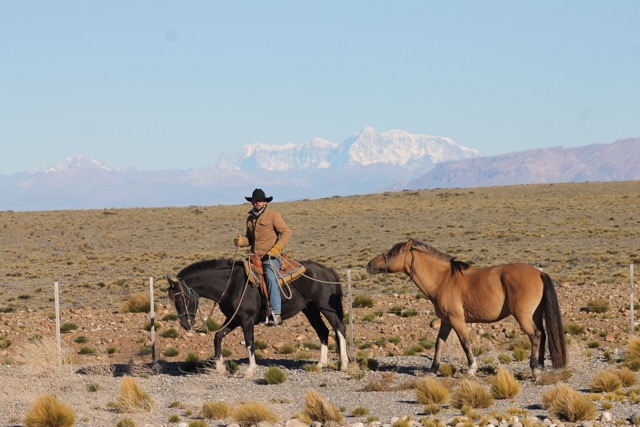Journey America Part 2
Butch goes missing 06.29.17

The torrential rains that hit Patagonia not only made my life hell, but caused roads to collapse and flooded entire cities, cutting them off from the rest of the country. Unfortunately, one of the hardest hit was Comodoro Rivadavia, the nation’s “oil capital,” 300 kilometers to the east of Perito Moreno and the only place we could get the parts needed to fix the support van.
We were forced to wait in the small town for four days. By the time the van was repaired, my patience had been tested and my wallet drained. And to top it off, Butch Cassidy, the dog I adopted in El Bolson, had disappeared. We searched and searched for the little white ball of fur, but he was gone.
Every time we arrived in a town, the puppy who once called the streets home, wanted to do nothing but wonder the streets. He always came back eventually but this time he didn’t.
And so, with sad hearts, without Butch, we started out again, heading south into the most arduous part of the journey — 900 kilometres of nothing but desert and wind — toward Rio Gallegos, the capital of Santa Cruz.
Luckily, I had Toti by my side to tackle this difficult stretch. My Argentinian support driver very quickly became my brother! Without his help I dont know how I would continue. I also had the support of my new friend Clara. Toti’s friend Lucio returned from Perito Moreno but Clara stayed to trek with us another week.
Some days Clara travelled in the van with Toti; other days she walked next to me as we led the horses; on some stretches, she rode Sapo and I rode Picasso.
As we trekked over the pink and red hills near the village of Bajo Caracoles, she thanked me over and over again. The raw beauty we encountered in this part of Patagonia was intense. The sky was lit on fire with every sunrise and sunset — shades of neon blue, purple and pink danced alongside dark yellow and deep red clouds. Every day we rode by hundreds of guanacos and wild ostriches grazing peacefully.
In Cueva de las Manos, we travelled back in time — more than 9,000 years — by taking in the cave paintings from the first Patagonian nomads. The cave system, which lies in the valley of the Pinturas River, is alive with artwork from about 7,300 BC. It gets its name from the many paintings of hands stencilled on the rock walls. Archeologists say early hunters and artists used mineral pigments from the area mixed with water to create not only the hand stencils but also illustrations of animals and hunting techniques.
Twitter View All
@OrganikHipHop @TheSaurus831 @alexktwist @KingOfTheDot @RuinYourDayNow @NinoBless @GullyTK @regokotd This will be a banger 🔥
“Temos sérias preocupações de que o PL 2630 mude a internet que você conhece para pior e limite a inovação, a liberdade de expressão e a geração de oportunidades econômicas para todos os brasileiros.” Google Brasil #MaisDebatePL2630
RT @portolandia E, sem spoilers, o final deixa um gostinho de 'quero mais', esperando que as duas etapas seguintes — que ele já fez, indo do Alaska até Calgary e de Barretos até Ushuaia — também sejam registrados em todo seu esplendor. https://t.co/7BkLZ8dBxa pic.twitter.com/cx1fcXg5Xz